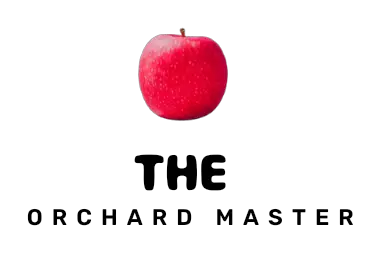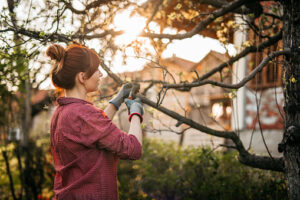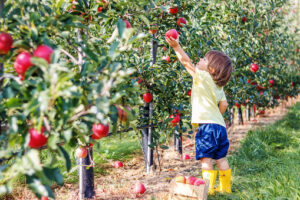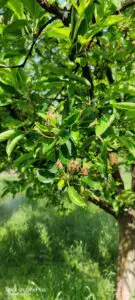Introduction:
When you think about growing apples, images of beautiful trees laden with shiny, red might come to mind. However, lurking within the orchard’s foliage may be an unwelcomed guest, the lenticel blotch. This problematic condition can affect the appearance of your apples, causing blemishes and even reducing their market value. In this blog, we will explore what lenticel blotch is, the factors that can contribute to its development, and potential ways to effectively manage this issue in your apple orchard.

What is Lenticel Blotch?
Lenticel blotch is a physiological disorder affecting the apple’s skin and is sometimes referred to as “apple russeting. Lenticel blotch is a common fungal disease that affects apples and pears. It appears as dark, sunken spots on the fruit and can reduce the quality and value of the crop.” It is primarily a cosmetic issue; lenticel blotch doesn’t affect the taste or nutritional content of apples. However, it has a negative impact on the fruit’s appearance and can reduce its market value, especially in fresh markets where visual appeal is paramount.
The disorder presents as dark, irregularly shaped blemishes surrounding the lenticels on the apple’s skin. The condition can be severe, with multiple blotches covering most of the fruit, or less conspicuous with just a few splotches. On some occasions, the disorder affects the storage ability of the fruit and causes it to have a shorter shelf life.
Factors Contributing to Lenticel Blotch
Lenticel blotch is a complex disorder, and its exact cause is not yet fully understood. However, several factors can contribute to its development:
- Weather conditions: High humidity, rainfall, and prolonged periods of wetness can increase the chances of lenticel blotch development. It is believed that these conditions facilitate the entry of microorganisms, such as bacteria and fungi, into the lenticels, leading to blemishes.
- Orchard management practices: Inadequate tree pruning, leading to reduced air circulation within the canopy, can contribute to lenticel blotch development. A crowded canopy retains moisture, thereby creating an environment conducive to the development of the disorder.
- Apple cultivar susceptibility: Some apple varieties are more prone to developing lenticel blotch than others. Breeding programs are underway to develop cultivars with increased resistance to this disorder, but currently, susceptibility can vary depending primarily on the apple’s genetic makeup.
Managing Lenticel Blotch in the Orchard
While there is no direct cure for lenticel blotch, implementing best practices in the apple orchard can minimize the occurrence of this disorder:
- Pruning and thinning: Regular pruning and thinning of apple tree canopies can help improve air circulation, reduce humidity, and facilitate faster drying of leaves and fruits after rainfall. This can diminish the chances of developing lenticel blotch.
- Irrigation management: It is important to adjust your irrigation schedule to avoid over-watering or watering during periods of high humidity. Using drip irrigation systems instead of overhead irrigation can help minimize the risk of excess moisture on tree foliage and fruits, which can contribute to lenticel blotch development.
- Disease control: Regularly monitoring and controlling diseases and pests in the orchard can help maintain overall tree health, making them less susceptible to developing lenticel blotch. Implementing effective integrated pest management (IPM) plan and monitoring fungal diseases, such as apple scabs and powdery mildew, can contribute to overall tree health.
- Fungicides: In some cases, fungicides can be used to manage lenticel blotch. Fungicides containing active ingredients such as captan, thiophanate-methyl, or mancozeb may be effective against certain fungal pathogens associated with lenticel blotch. The specific fungicide and application timing would depend on local regulations and the recommendations of local experts.
- Calcium Treatments: Lenticel blotch can be linked to calcium deficiencies in the fruit. Calcium treatments, such as calcium sprays or dips, can help improve fruit calcium levels and potentially reduce the severity of lenticel blotch. Calcium nitrate or calcium chloride are common sources of calcium used in these treatments.
- Crop load management: Balancing crop load is an essential aspect of orchard management. Overloaded trees may lead to fruit that is more prone to developing lenticel blotch as the tree’s resources become stretched thin. Implementing a proper crop load management plan can help reduce stress on the trees, diminishing the likelihood of disorder development.
- Fruit protection: Employing fruit-protecting measures like reflective mulches or shade cloths can help reduce the impact of environmental factors contributing to lenticel blotch. These materials can diffuse sunlight, lower the fruit’s surface temperature, and reduce water loss, potentially lessening the occurrence of lenticel blotch.
- Harvest and storage: Timely harvesting of apples can minimize the development of lenticel blotch, as fruit remaining on the tree for too long can become more susceptible to developing the disorder. Moreover, proper fruit handling and storage practices can help maintain the fruit’s appearance and prevent further development of lenticel blotch during post-harvest processing.
- Research and development: Continued research into apple cultivars, breeding programs, and disease resistance is crucial for a long-term solution to lenticel blotch. The development of resistant apple varieties, as well as an improved understanding of the disorder’s underlying causes, can eventually lead to a more integrated and effective management plan for lenticel blotch.
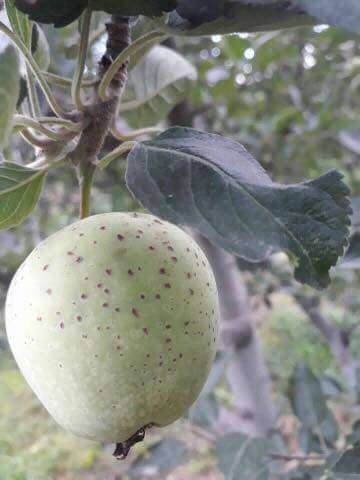
Conclusion:
Lenticel blotch is an unwelcome guest in apple orchards, affecting the fruit’s appearance and market value. Although this disorder’s exact cause remains unclear, certain factors can contribute to its development, such as weather conditions, orchard management practices, or apple cultivar susceptibility. By implementing comprehensive management practices, improving overall tree health, and staying updated with the latest research developments, apple growers can effectively minimize the occurrence of lenticel blotch and maintain the maximum quality of their apple harvest.
